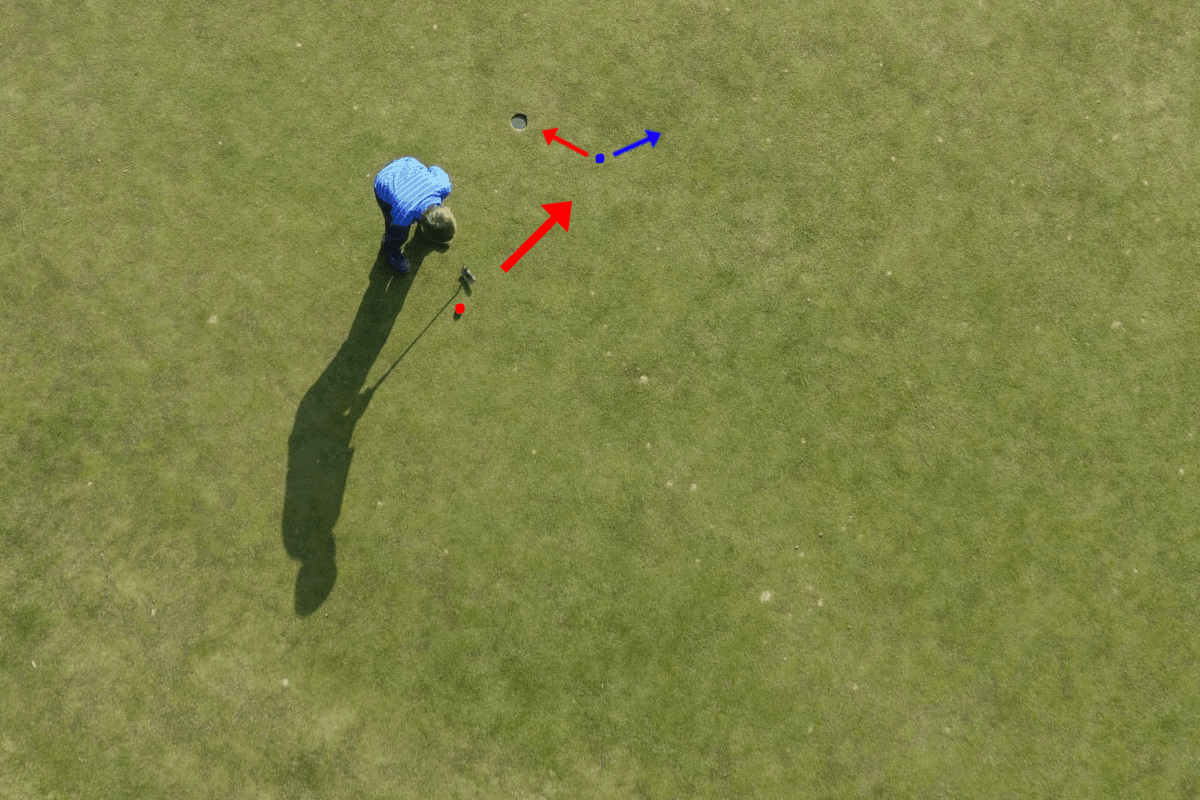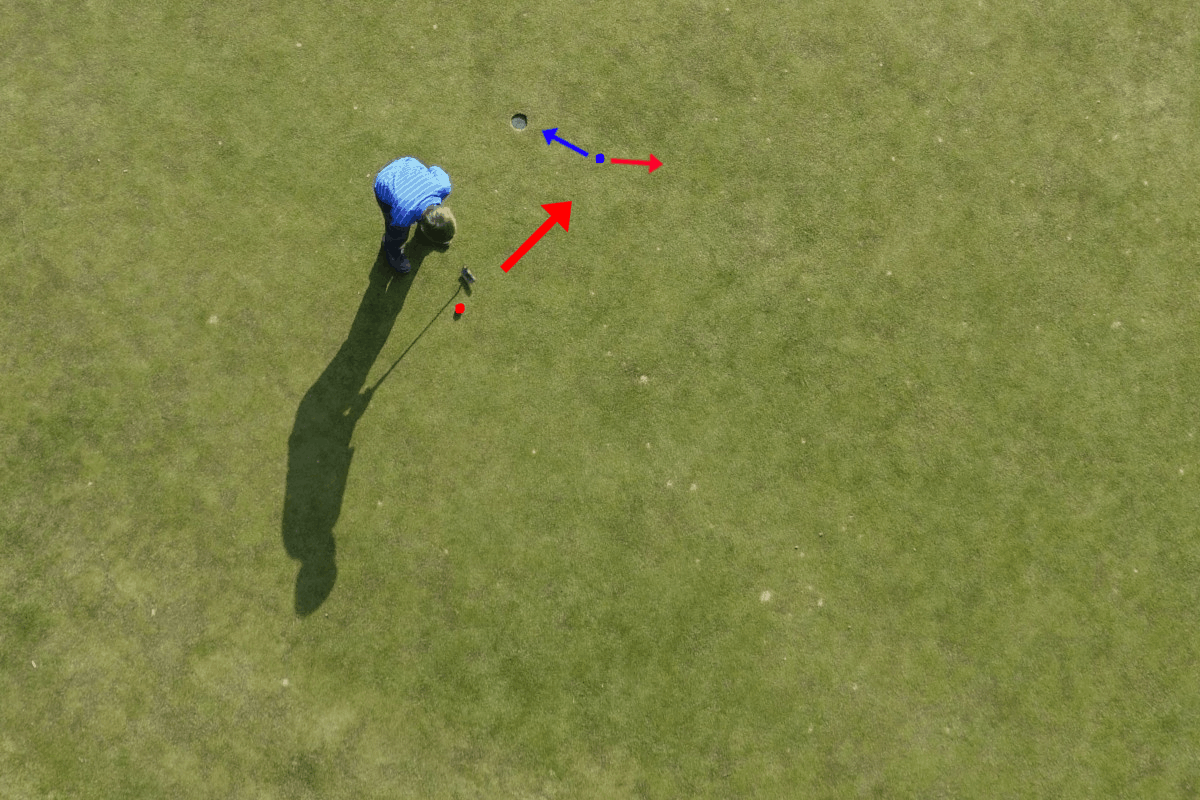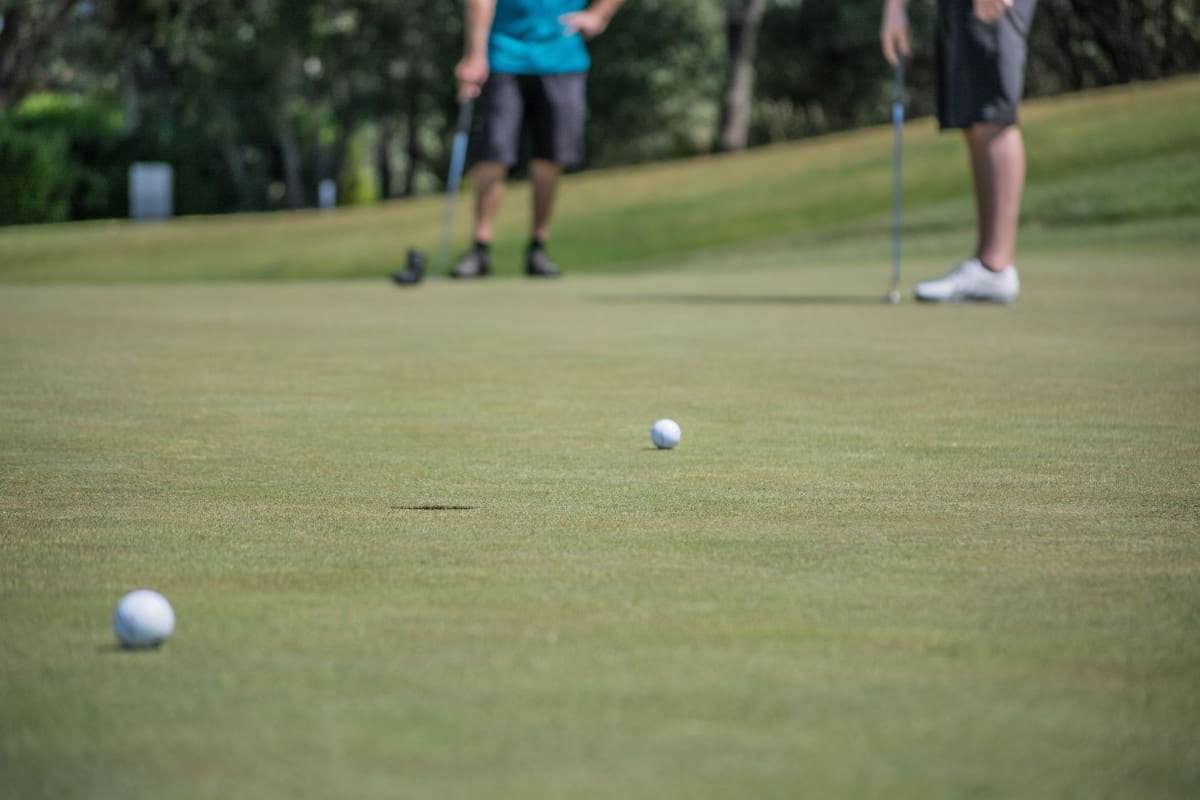If you have ever been on the green and found yourself in the situation where your ball hits another player’s ball into the hole, what do you do? Although it is a rare occurrence, it is important to know exactly what to do. So, when this situation crossed my mind, I decided to look into what was the best course of action.
What happens when a golf ball hits another ball into the hole? If the ball that is in play hits a ball that is at rest and then proceeds to roll into the hole, then it counts as a holed ball. However, if the ball at rest is holed, it must be replaced, and positioned back to its original position.
The Ball at Rest vs. the Ball in Motion
So, for this question, I realized that there are two different situations that someone could be in when asking this question.
- Situation #1: The ball in play/in motion collides with a ball at rest and then goes into the hole.
- Situation #2: When the two balls collide, the ball at rest goes into the hole.
These two situations require very different courses of action, so to help depict each scenario I quickly edited some photos to show you what happens for each scenario when either ball goes into the hole.
Situation 1: The ball in play is holed after colliding with a ball on the green
In this case, I’ve colored the ball in play red, along with red arrows to see the path it takes throughout the putt. As you can see, after the red ball collides with the blue ball (noted by the blue dot and blue arrow) , it then goes into the hole. The ball in play is counted as a holed ball, and no further action is required. The ball in blue must be placed back onto its original spot on the green.

Situation 2: The ball at rest is holed after colliding with the ball in motion
In this case, the ball in motion hits the ball at rest into the hole. The course of action required here is that the ball at rest (blue ball) must be placed back onto the green where it was previously located. Furthermore, the ball at rest is not counted as a holed ball. The red ball must stay wherever it ended up after colliding with the first ball.

Why Does the ‘Ball-in-Motion’ Stay Where It Rolls?
A question that came to my mind was, if the ball in motion, is obstructed by an object, how come the golfer doesn’t get to redo their shot? After looking at the regulations put in by the USGA, rule 11.1b essentially states that unless the object that obstructed the ball-in-motion is a moving object (such as an animal, person, etc.), the ball must stay where it is.
This is because the object should be taken into consideration before the putt was made. Basically, all stationary objects in the line of putt are assumed to be accounted for, therefore there is no reason for a redo of their putt.
Why Does the Ball-at-Rest Need to Be Replaced?
The ball at rest must be put back into its original spot for two reasons:
- A player’s ball can not be moved once it is at rest. The ball can only move when it is that player’s turn.
- An opponent could deliberately hit another player’s ball to put them at a disadvantage.
To help you understand why this rule is in place, say for example, you and your opponent are on the green, and rather than aiming for the hole, your opponent aims for your ball. Now, your opponent hits your ball, causing it to roll off of the green and into the bunker. That doesn’t seem too fair, does it? So to prevent this, the ball at rest is supposed to be put back into its original spot.
It is mainly in place to make sure that the focus of the game is on getting your ball into the hole, rather than playing defense against your opponent.
Is There a Penalty for Hitting Another Golf Ball on the Green?
According to the USGA’s rules on accidental ball movement on the green, there is no penalty incurred for either player if a ball is accidentally hit. This means that if your opponent accidentally hits your ball while it’s on the green, neither of you would get a penalty.
This change in ruling is actually quite new. The USGA says that many of these new rules regarding penalties for ball movement favor the players more so in comparison to the previous rules.



